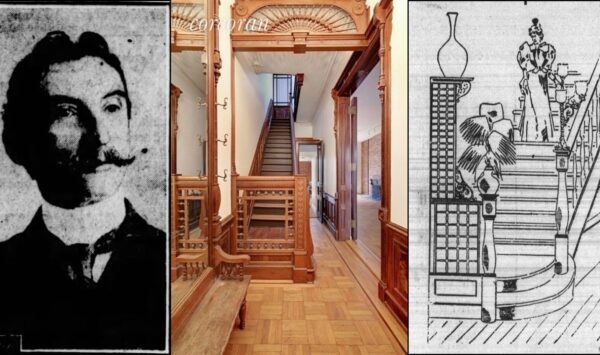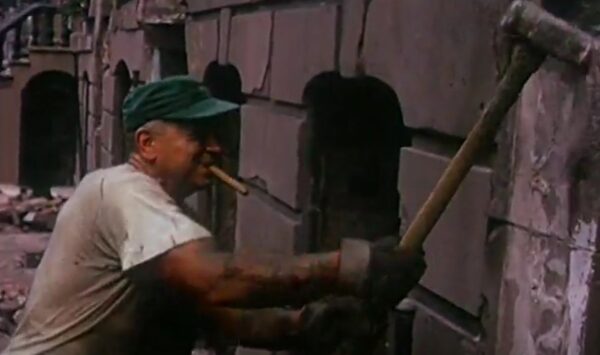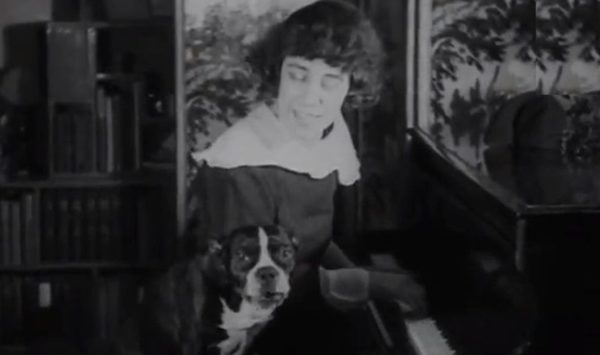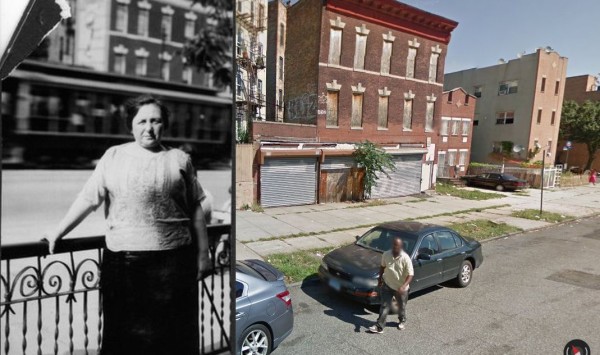THE PSYCHE OF No. 192 ST. JOHN’S PL. (1889)

******************************************************************************************************************************** Brownstone Detectives investigates the history of our clients’ homes. The story you are about to read was composed from research conducted in the course of one of those investigations. Do you know the history of YOUR house? ******************************************************************************************************************************** Starting in the late 1880s, the Brooklyn Daily Eagle started a series of articles which described – in great length and detail – the interiors of individual newly-built or renovated houses. These houses were usually brownstones belonging to those affluent or upper-middle-class members of society. Not only did such articles describing the interiors of neighbors’ homes sell newspapers, but the articles also served as advertising directed at those in the market for a townhouse who wanted a home of their own. These advertisement-articles were placed, likely at the expense of the designers responsible for the “interior decorations” being described, as each piece often ended with what readers wanted to know: “Who did the work?” “THE WORK WAS DONE BY A. KORBER” Albert Korber, who went by “A. Korber,” was an architect and designer who settled in Brooklyn at the age of 15. Three years later he “started business on Adams street as a manufacturer of picture frames and moldings. Several years later he founded the decorating business which bears his name, with showrooms on Montague street and a factory for the manufacture of interior woodwork and furniture in South Brooklyn.” By 1889, Korber was 42, a successful decorator throughout the City of Brooklyn. Although he was held in high esteem for […]
THE SNATCHING OF ST. JOHN’S STOOPS (1970)

******************************************************************************************************************************** Brownstone Detectives investigates the history of our clients’ homes. The story you are about to read was composed from research conducted in the course of one of those investigations. Do you know the history of YOUR house? ******************************************************************************************************************************** In the 1970s, a row of stoops belonging to St. Johns Place brownstones were destroyed. You may notice them today as you walk down St. Johns Place and wonder at the stoop-less brownstones and wonder why they look so much like brownstone, but – for some reason – cannot be. These Victorian brownstones on the north side of St. John’s Place between 5th and 6th avenues – Nos. 35 to 67 – were, at that time, in an extremely derelict state. A part of the slums of the Park Slope section of Brooklyn, they were being transformed into working class housing, apartments for low-income families. A part of the conversion of these brownstones to apartments was the removal of their stoops. This extreme adjustment to the façades of these buildings had the benefit of allowing them to have just one entrance – on the ground level – through which all apartment dwellers would access their apartments. If you ever wondered what that destruction looked like, you’re in luck! In this short amateur film, these stoops can be seen being systemically removed from the fronts of their brownstones. The film is in color, lasts approximately seven minutes, and gives a taste of 1970s Park Slope. Follow @BrownstoneDetec Share ———————————————————————————————————————– The Brownstone Detectives […]
THE SINGING DOG OF LINCOLN PLACE (1915)

******************************************************************************************************************************** Brownstone Detectives investigates the history of our clients’ homes. The story you are about to read was composed from research conducted in the course of one of those investigations. Do you know the history of YOUR house? ******************************************************************************************************************************** Nothing makes front page news like the ridiculous or the sublime. Just over 100 years ago, the stage was certainly given over to the ridiculous. That year – 1915 – produced the first-ever crooning canine. And “Bunny,” the French bulldog was its name- or, rather, was it “Gaby,” the French bulldog – but, perhaps, it was “Bunny”? This confusion, it seemed, was the apex upon which would spin the entire ever-dizzying melodrama concerning the ownership of said dog – and to obscure matters even slightly further, there was a total of three individuals who seemed to be quite certain that each was the master to this now-famous dog. The contest, thus, was set, the curtains prepared to be drawn, and the public waited impatiently to review every detail of the salacious tragedy in an effort to determine the eventual players of the parts – in particular, who would emerge before the footlights in the precious and coveted melodramatic role of supporting actress to Bunny (or Gaby), the singing dog. And the newspapers covered it all, down to its last partially accurate detail. SETTING THE STAGE The Bunny-Gaby trial was certain to provide some good pieces for the newspapers for at least a week as the case weaved its way through the […]
WHERE WAS THIS PICTURE TAKEN? PT. II (1924)

Junior Brownstone Detectives! In last week’s episode, “Where Was This Picture Taken, Pt. I,” we challenged you to a task of monumental proportions: “Study an historic photograph and determine where in Brooklyn it was taken.” As you’ll recall, while the photograph had some distinguishing elements in it, the location of the subject was not immediately discernible. Each of the elements therein could have been found within any of the sections of the borough. We decided, though, that studying the elements of the picture itself, along with just a bit of information about the individual within the picture, we might determine, with great specificity, exactly where the photograph was taken. Today, we are going to review some sources that the Brownstone Detectives use on a daily basis to solve everyday dilemmas such as this one. AN HISTORICAL DETECTIVE’S TOOLKIT Where do we begin when attempting to determine the Brooklyn location of an old photograph? There are a number of resources that can be of use in any mystery such as this. For the particular one we’ve presented you with, though, we will list the resources that we often use and show you how to use them in attempting to find a solution: Ancestry.com – If you have a name connected with the subject in the photo, as we did, this is always a good place to begin your search. At Ancestry.com, using the search function, place any names that you have into the engine, and then see what pops up. With […]